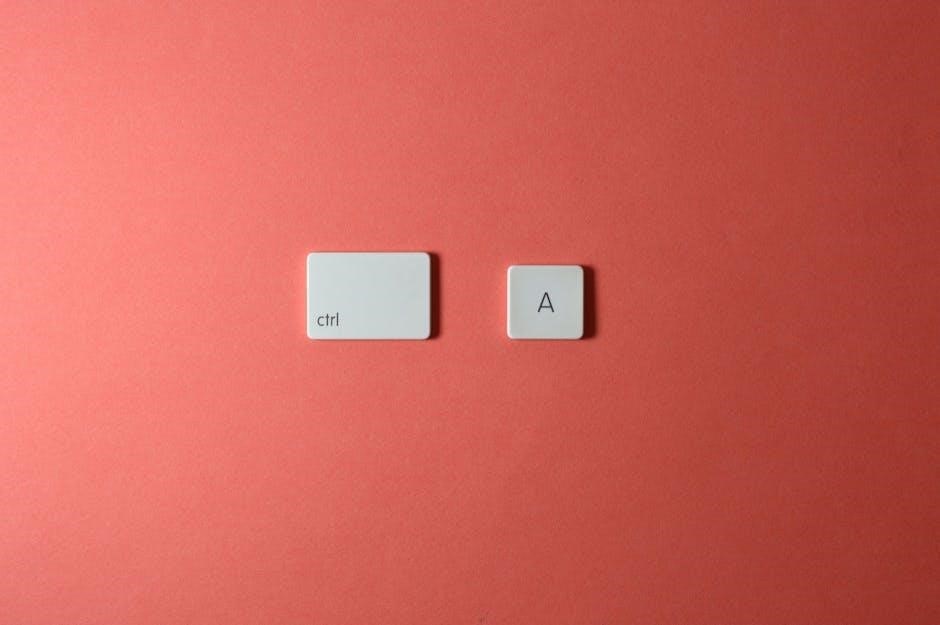Techno Beat Electronic Keyboard Manual: A Comprehensive Guide
Welcome to the ultimate guide for mastering techno music creation with your electronic keyboard! This manual provides a comprehensive overview, exploring the historical development, unique sound characteristics, and influential artists shaping the genre’s future. You’ll discover techniques, tips, and tricks to produce compelling techno beats and immerse yourself in the hypnotic world of minimal techno.
Techno music, with its repetitive instrumental nature, reliance on synthesizers, drum machines, and hardware, has captivated audiences worldwide. The Techno Beat Electronic Keyboard offers a unique avenue for incorporating these sounds into your compositions, providing a hands-on approach to creating authentic techno rhythms and melodies. This manual serves as your compass, guiding you through the intricacies of using your keyboard to its full potential within the techno landscape.

Whether you’re a seasoned producer or a budding enthusiast, understanding the core elements of techno is crucial. This section will explore the history of techno, its evolution, and the fundamental sounds that define the genre. We’ll delve into the role of electronic keyboards in techno production, highlighting their versatility and ability to emulate classic synthesizers and drum machines. The manual will also cover the basic functions of your keyboard and how these functions can be used to create unique techno sounds. Discover how to layer sub-bass for depth, craft punchy kick drum sounds, and explore melodic elements using synth presets.
We will also touch on essential equipment to help you produce techno music.
Essential Equipment for Techno Production
Embarking on your techno production journey requires more than just a keyboard. To truly unlock your creative potential and achieve professional-grade results, certain equipment becomes indispensable. High-quality monitor speakers are crucial for accurate sound reproduction, allowing you to hear subtle nuances and make informed mixing decisions. An audio interface acts as the bridge between your keyboard and computer, ensuring pristine audio capture and playback with minimal latency.
A Digital Audio Workstation (DAW) is the central hub for your music production workflow. DAWs like Ableton Live, Logic Pro X, and FL Studio offer comprehensive tools for recording, editing, mixing, and mastering your techno tracks. A MIDI keyboard extends your control over the DAW, enabling you to input notes, automate parameters, and express your musical ideas with greater precision. Consider external hardware synthesizers to expand your sonic palette and create truly unique sounds.
Investing in these essential tools will significantly elevate your techno production capabilities, empowering you to craft driving beats and immersive soundscapes. This section will further elaborate on selecting the right equipment for your specific needs and budget.
Creating a Basic Techno Rhythm on a Keyboard
The foundation of any compelling techno track lies in its rhythm. Here’s how to construct a basic techno rhythm using your electronic keyboard. Begin by selecting a suitable tempo, around 120 BPM is a great starting point. Next, focus on the drum elements. A classic techno pattern consists of a kick drum on beats 1 and 3, providing the driving pulse. Add a snare drum on beats 2 and 4 to create a sense of backbeat and groove. Incorporate hi-hats on every eighth-note to fill the rhythmic space and add energy.
Once you have the basic drum pattern established, introduce a bassline. A simple, repetitive bassline can provide a solid foundation for the track. Experiment with different bass sounds to find one that complements the drums and adds depth to the overall sound. Remember to keep the rhythm consistent and driving, focusing on creating a hypnotic groove that will keep listeners engaged.
This basic rhythm serves as the building block for more complex techno arrangements. Experiment with variations, fills, and additional percussion elements to add interest and texture to your tracks.
Techniques for Crafting Driving Techno Beats
Creating a driving techno beat involves more than just basic rhythm. Several techniques can elevate your tracks and captivate listeners. Layering multiple percussion elements is crucial. Combine different drum sounds, such as claps, snares, and toms, to create a rich and textured rhythmic foundation. Experiment with subtle variations in velocity and timing to add a human feel to the beat.
Effects play a vital role in shaping the sound of your techno beats. Use delay and reverb to add space and depth to individual sounds. Experiment with different types of distortion to add grit and aggression. Sidechain compression can create a pumping effect, adding a sense of energy and movement to the track.
Careful arrangement is essential for building tension and release. Introduce new elements gradually, creating a sense of anticipation. Use breaks and fills to provide moments of respite before building back up to the main groove. Pay attention to the overall structure of the track, ensuring that it maintains interest and momentum throughout.
Sound Design: Synthesizing and Layering Sounds
Sound design is at the heart of crafting unique and compelling techno music; Synthesizing and layering sounds allows you to create textures and timbres that define your tracks. Begin by exploring the capabilities of your keyboard’s synthesizer engine or software synthesizers within your DAW. Experiment with different waveforms, filters, and modulation options to create a wide range of sounds.
Layering involves combining multiple sounds to create a richer, more complex sonic landscape. Start by layering a solid kick drum with a sub-bass to create a powerful low-end foundation. Add layers of percussive elements, such as hi-hats, snares, and claps, to build a rhythmic texture. Experiment with layering different synth sounds to create evolving soundscapes.
Consider EQ and panning when layering sounds to avoid muddiness and create a sense of space. Use EQ to carve out specific frequency ranges for each sound, ensuring that they don’t clash. Panning can create a wider stereo image, enhancing the overall listening experience.

Keyboards and DAWs for Techno Music Production
The synergy between keyboards and Digital Audio Workstations (DAWs) is crucial for modern techno production. Your keyboard acts as a versatile input device, allowing you to play melodies, program rhythms, and control virtual instruments within your DAW. Selecting the right DAW is essential, with popular choices including Ableton Live, Logic Pro X, and FL Studio, each offering unique workflows and features tailored for electronic music production.

A MIDI keyboard will help you to enter and record notes into the DAW. This is also called piano roll and tells you to use the lights to write down the notes. When choosing a keyboard, consider factors such as key size, action, and the availability of MIDI controllers like knobs and faders, which can be mapped to control parameters within your DAW. These controllers provide tactile control over effects, filters, and other sound-shaping tools, enhancing your creative workflow.
DAWs offer a wide range of tools for manipulating and processing audio, including synthesizers, samplers, and effects plugins. Experiment with different plugins to create unique sounds and textures, and use your keyboard to control these plugins in real-time.
Tempo and Timing in Techno Music
Tempo and timing are fundamental elements in crafting compelling techno music. Before diving into note creation, establishing the tempo, measured in beats per minute (BPM), is essential. Most keyboards have a tempo setting, usually ranging from 120 to 140 BPM, a common range for techno. Experiment with different tempos to find what best suits your track’s vibe, but 120 BPM is a good starting point.
Beyond the overall tempo, precise timing is crucial for creating the hypnotic, driving rhythms characteristic of techno. DAWs have quantization features that automatically correct timing imperfections, but be careful not to over-quantize, as this can lead to a sterile, robotic feel. Instead, aim for a balance between precision and subtle human feel. Try offsetting the rhythm by a beat or two before or after the 1 can work as well.
Experiment with syncopation and polyrhythms to add complexity and interest to your beats. Layering percussion elements with slightly different timings can create a sense of groove and movement. Consider using swing or shuffle to add a more organic feel to your rhythms.
Advanced Techniques: Effects and Arrangement
Once you have the basic structure of your techno track in place, you can use advanced techniques to elevate it to the next level. Effects play a crucial role in shaping the sound and creating atmosphere. Delay and reverb can add depth and texture to individual sounds, while distortion and overdrive can add aggression and energy. Experiment with different combinations of effects to find unique sounds.
Arrangement is key to building tension and energy over time. Start with a simple, stripped-down intro, gradually adding elements as the track progresses. Use automation to create movement and variation in the sound. Consider using risers and sweeps to build anticipation before drops. A great attention-grabbing technique, and many techno producers use this to switch up different sections.
Pay attention to the overall flow of the track. Use breakdowns and buildups to create contrast and keep the listener engaged. Experiment with different arrangement techniques, such as call and response, to add interest and dynamics. Remember, the goal is to create a journey for the listener, guiding them through a sonic landscape of sound.
Mastering Your Techno Tracks
Mastering is the final, crucial step in the techno music production process, ensuring your tracks sound polished, balanced, and ready for distribution. It’s where you optimize the overall sonic quality, making your music translate well across various playback systems, from headphones to club sound systems.
The mastering stage involves subtle adjustments to the overall EQ, compression, and stereo imaging of your track. A mastering engineer will use specialized tools and techniques to enhance the clarity, punch, and loudness of your music without sacrificing its dynamic range or introducing unwanted artifacts. The goal is to create a cohesive and impactful listening experience that grabs the listener’s attention.
Consider using professional mastering services to achieve the best possible results. A mastering engineer has the experience and expertise to identify and address any sonic issues in your mix, ensuring your techno tracks sound their absolute best. Mastering is an essential part of any music production, including techno. It helps to ensure that the final mix is balanced, polished, and ready for distribution to streaming platforms and other outlets.
Exploring Melodic Elements and Synth Presets

While techno is often characterized by its driving rhythms and hypnotic repetition, melodic elements play a vital role in adding depth, emotion, and interest to your tracks. Exploring different melodic approaches and synth presets can significantly enhance the overall impact of your techno music.
Experiment with creating simple, yet memorable melodies using your electronic keyboard. Focus on crafting short, repetitive phrases that complement the rhythmic foundation of your track. Consider using arpeggiated sequences, evolving pads, or subtle lead lines to introduce melodic variations and textures. Don’t be afraid to experiment with unconventional scales or modes to create unique and intriguing melodies.
Synth presets are a great starting point for exploring different sonic possibilities. Many electronic keyboards and DAWs come with a vast library of synth presets specifically designed for electronic music. Experiment with different presets and tweak them to create your own unique sounds. Pay attention to the timbre, envelope, and effects of each preset to understand how it contributes to the overall sound. Remember to keep in mind the importance of the right sounds to help you produce techno music.
